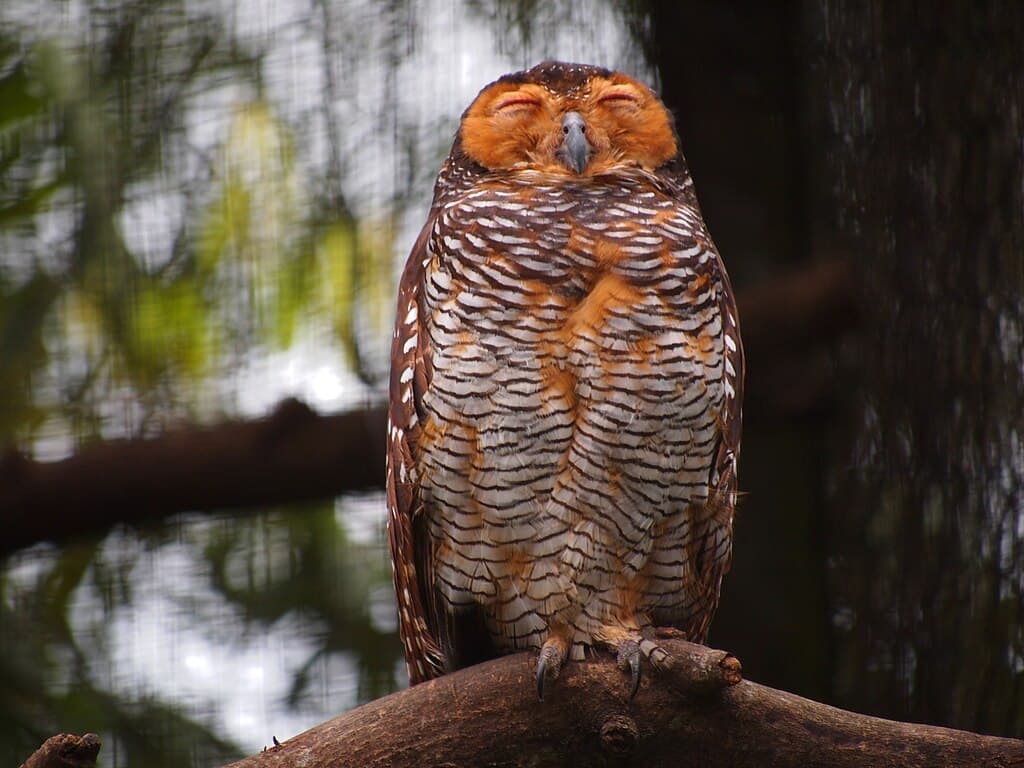Owls are my personal favorite animals, and I find them very fascinating despite the myths about them in my country. There are 10 owl species in Cambodia, and our myths cause many people to mistreat them. According to the myths, it is believed that owls bring bad luck and omen to the people and village. This is why many villagers in rural areas kill them when they see one around their house. If you are curious about how many owl species there are in Cambodia, check out the list below.
Asian Barred Owlet (មៀមតូចព្រៃ)
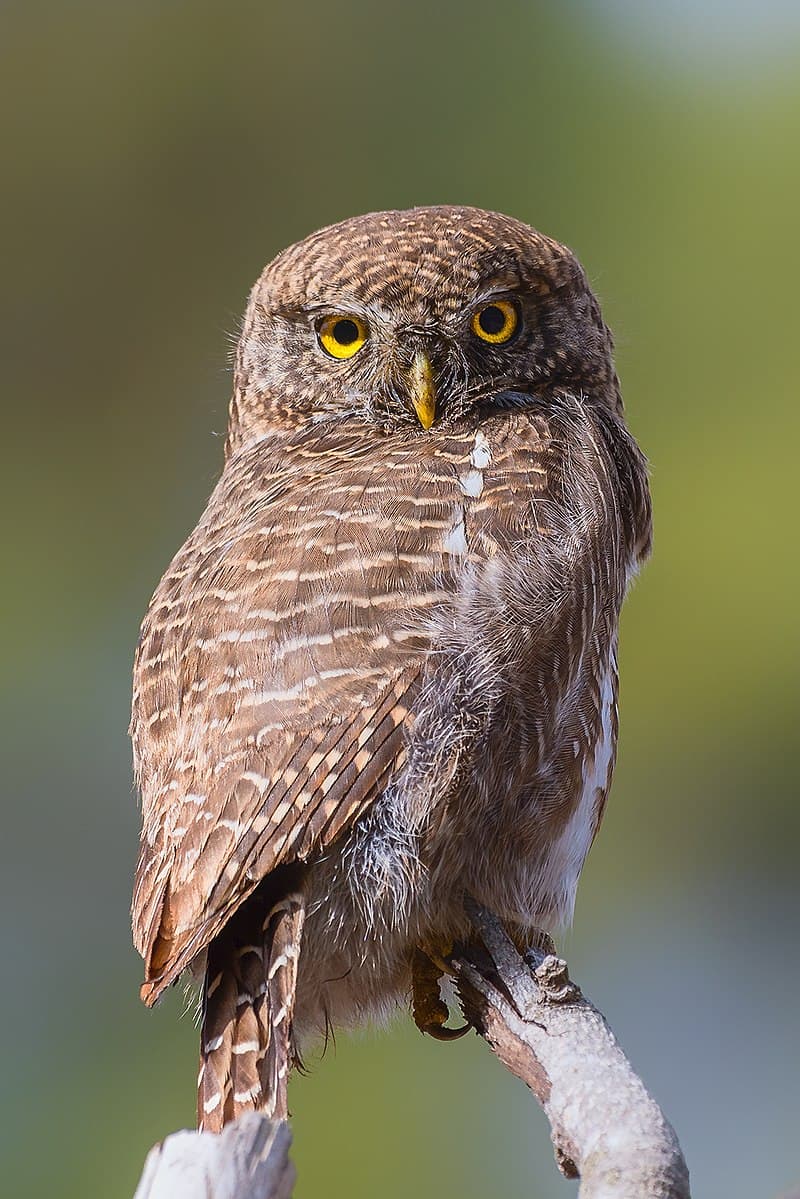
Growing up to 20 to 25 centimeters, the Asian barred owlets are medium-sized birds. Adults of this species have a grayish brown head with buff barring while the upperparts are rufous-brown with buff barring. Their underparts are brownish with buff barring on the belly, and there are white patches on their flanks. These owlets have a broken white line at the edge of their scapulars with a white chin stripe, and they lack ear tufts. They have brown tails with pale buff bands, and the tip of their tail feathers is whitish. Asian barred owlets have pale green bills with pale yellow tips, and their feet are greenish yellow.
This owl species is native to temperate forests of mainland Southeast Asia, northeastern parts of the Indian Subcontinent, and Southern China. Across their range, they inhabit evergreen forests, moist montane forests, moist shrublands, open oak and pine forests, and temperate forests. These owl species also like orchards, plantations, rural gardens, and subtropical and tropical moist lowland forests. They have yellow irises, indicating that they are diurnal so they hunt during the daytime. Their main diet consists of beetles, cicadas, crickets, grasshoppers, locusts, mantids, and termites. Sometimes they also prey on frogs, lizards, rodents, and small birds.
The Asian barred owlets also go by the name cuckoo owlet bird because they kill other birds and take over their nests. These owlets don’t build their don’t nests, and they do so so that they can lay their eggs.
Barn Owl (ខ្លែងស្រាក)
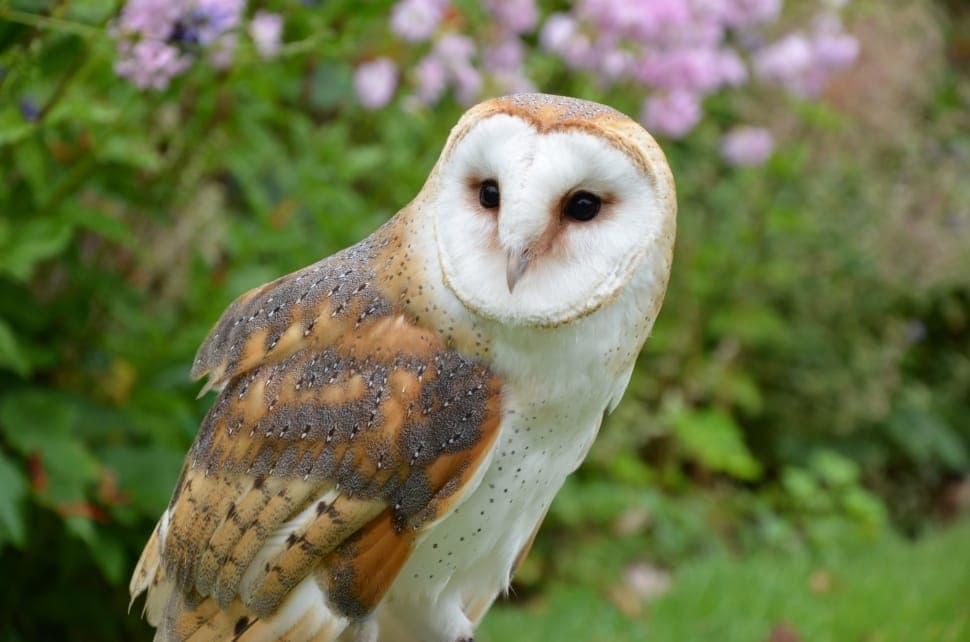
With a very familiar face, barn owls are the most widely distributed owl species in the world. Barn owls grow anywhere from 33 to 39 centimeters with color and size variation depending on where they are from. A barn owl has a white heart-shaped face with a mottled shade of brown or gray plumage on the head and back. The underparts of this bird vary from brown to white with dark speckle markings sometimes. And as you can see, they do not have ear tufts. Barn owls have black eyes, meaning they are nocturnal so they only hunt at night. Their acute sense of hearing and their silent flights help them hunt successfully even in complete darkness.
Barn owls are almost everywhere, except for the desert and polar regions, Indonesia, north of Indonesia, and some Pacific Islands. Usually, barn owls live in open country such as farmlands and grasslands with some interspersed woodland. At the same time, they also prefer to hunt along the edges of woods or in rough grass strips adjoining pasture. Barn owls nest and roost in abandoned barns, cavities, and dense trees. Rodents and small mammals make up over 90% of their daily diet. However, they also feed on amphibians, fish, insects, lizards, small birds, and spiders.
The unique thing about this owl species is that they do not hoot, but they utter an eerie screech instead. This is why people in rural areas of Cambodia consider them as a bad omen and the bringer of death. It is believed that a sick person will die the next day if a barn owl screeches on their roof. So whenever a barn owl is seen, people in remote areas will try to chase it away or even kill it.
Brown Fish Owl (ទីទុយត្រីថ្ងាសត្នោត)
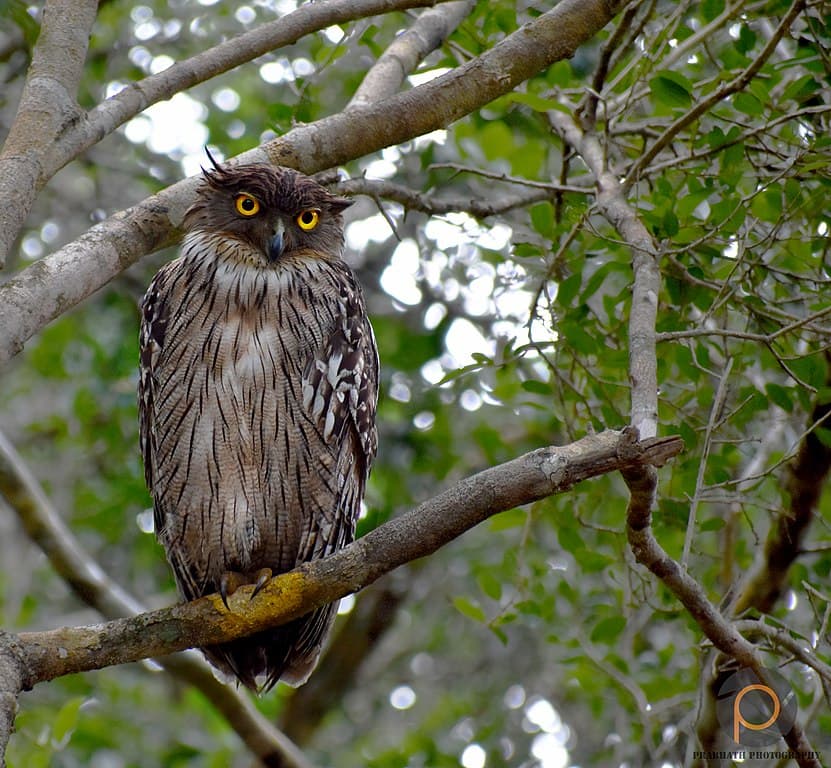
A brown fish owl’s size ranges from 48 to 61 centimeters depending on where they come from. Its upperparts have heavy black or dark brown streaks with buffy-fulvous to whitish underparts. The bird also has wavy dark brown streaks and finer brown barring and a puffy white throat. While the previous two owl species lack ear tufts, this one has prominent ear tufts. The most interesting part is the fact that they have large and powerful curved talons with sharp keels. This feature allows them to capture, especially slippery fish without a problem.
This owl species is native to South Asia, Southeast Asia, and Turkey where they inhabit forests and wooded wetlands. Their typical habits are forests, lowlands, plantations, ravines, and woodlands adjacent to lakes, rice fields, or streams. They are active both day and night, spending most of their hunting fish for food. Thanks to their powerful feet, they only need to put their feet into the water to capture prey fish. Besides fish, they also feed on amphibians, crabs, crayfish, frogs, insects, large beetles, other birds, reptiles, rodents, and small mammals.
Brown fish owls face many threats, especially habitat destruction. In India, people kill thousands of brown fish owls during the festival of Diwali due to some superstitious beliefs. People believe that they have evil nature and they also do so to gain the power of black magic.
Brown Hawk Owl (មៀមខ្លែង)
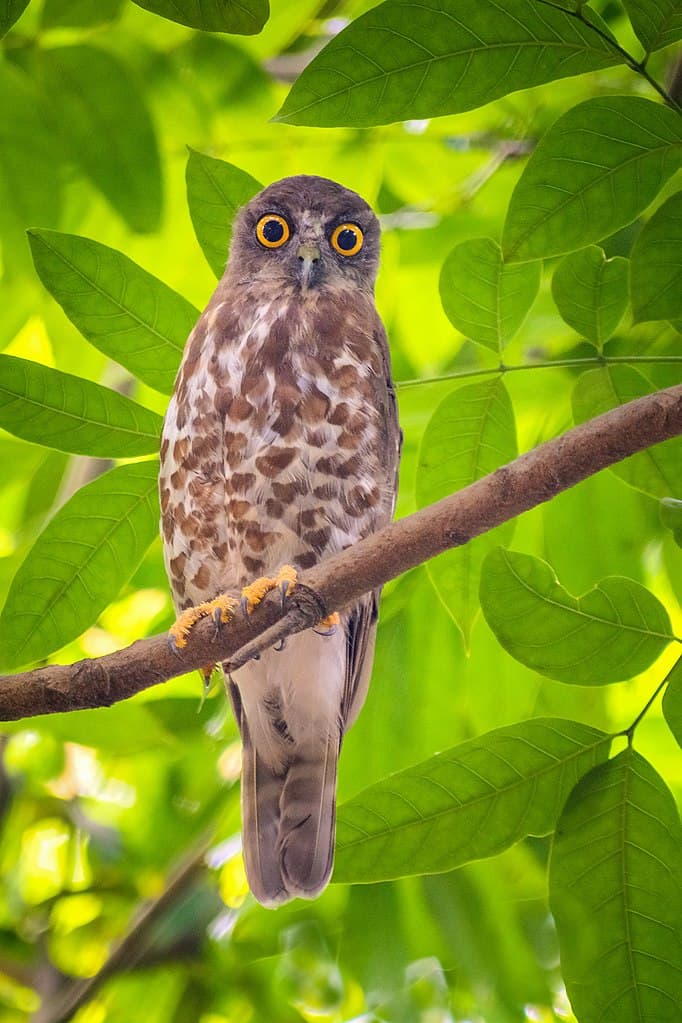
Also goes by the name brown boobook, the brown hawk owl is a medium-sized owl with a round head. Its facial disc is brown with many narrow whitish streaks and it lacks ear tufts. The bird’s cere is dull green to greenish brown with a bluish-black bill with a paler tip. Brown hawk owls have a white spot on the forehead with a chocolate brown crown and nape. At the same time, its back, mantle, and wing coverts are also chocolate brown. The underparts of this owl species are whitish with large drop-shaped rufous-brown streaks. It has a long tail with dark brown and whitish tips along with broad bands and pale grayish-brown bars.
Brown hawk owls are native to Bangladesh, India, Middle East Nepal, Sri Lanka, South China, and Southeast Asia. They inhabit agricultural fields, moist mangroves, plantations, rural gardens, urban areas, well-wooded country and forests, and other tropical areas. As crepuscular and nocturnal birds, these owls roost during the day and are active during the night and dusk. The prey consists of frogs, large insects like beetles and grasshoppers, lizards, mice, and small birds. On some occasions, they also feed on crabs and bats as well.
Brown Wood Owl (មៀមធំគូក)
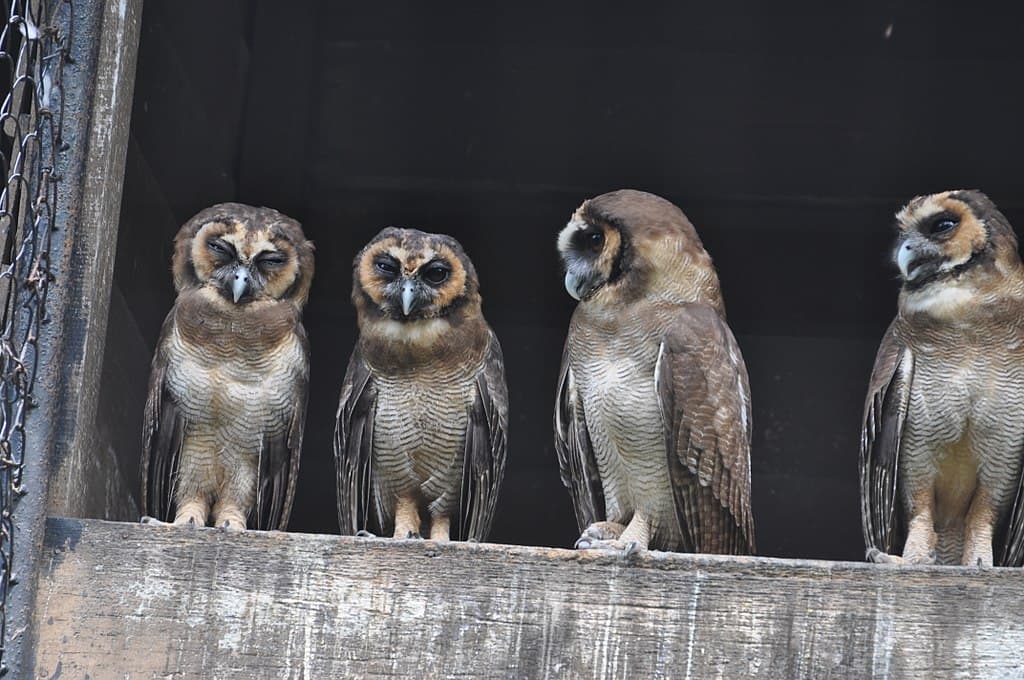
Brown wood owls are medium-large owl species that grow from 45 to 57 centimeters. A brown wood owl has dark brown upperparts with faint white spotting on the shoulders and buff underparts with brown streakings. Its facial disc is brown or rufous with white edges and without ear tufts, and its eyes are dark brown. The throat of brown wood owls has a narrow and white horizontal zone that contrasts with its brown neck.
Found in South Asia and Southeast Asia, brown wood owls are resident breeders in these regions. They live in found forests, and they are highly nocturnal and shy birds that roost during the day. More than that, they also inhabit dense evergreen forests, heavy tropical forests along the sea coast, lower hills, and lowlands. Their main diet consists of birds, crabs, frogs, large insects, reptiles, and small mammals like mice, rats, and shrews. It swallows the prey whole if it is small and it will tear the prey into pieces if it is big.
Some of the threats that these owls are facing are habitat degradation, habitat loss, and trapping for pet trade. Though it is illegal to keep them as pets, illegal pet trades still sell them. The only good thing is that their population is still doing well in the wild.
Collared Scops Owl (ឪឡឡឹក)
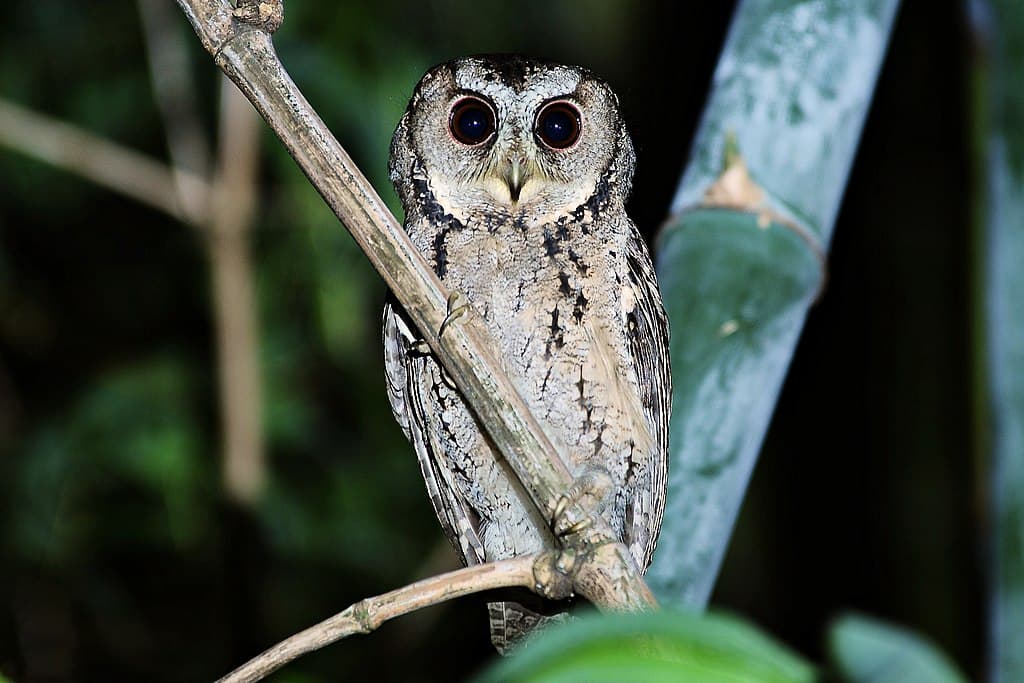
While most owl species on the list are medium and large, collared scops owls are rather smaller than the rest. Growing only from 23 to 25 centimeters, this one is actually the largest among the fellow scops owls. A collared scops owl has a buff or whitish facial disc with brown or orange eyes and small ear tufts. It has a buff neckband, brown or gray upperparts with buff spotting along with buff underparts with fine darker streakings.
Collared scops owls are nocturnal birds that roost during the day on a densely foliage branch. They usually inhabit forests, bamboo stands, open countries, plains, scrubs, submontane tracts, and towns. At night, they come out to hunt and their diet consists mainly of beetles, grasshoppers, and other insects. At the same time, they also feed on amphibians, lizards, mice, reptiles, and small birds as well. Collared scops owls have strong talons that they use to snatch prey before swallowing them whole.
Oriental Bay Owl (ឪឡគោ)
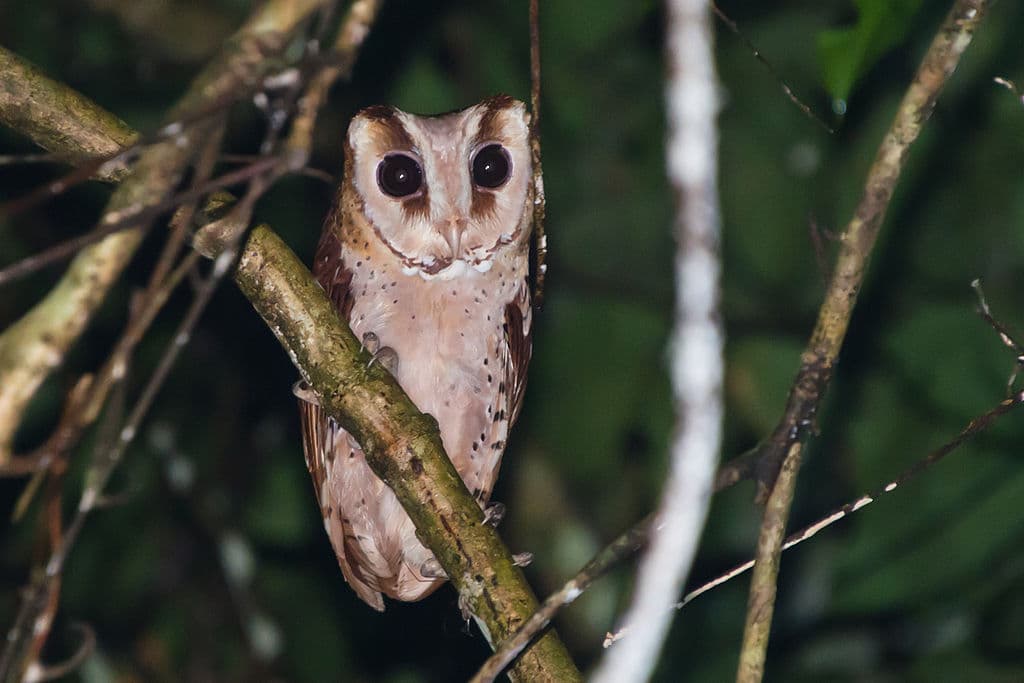
Oriental bay owls are small birds that grow to 22.5 to 29 centimeters. The facial disc of the bird is whitish-vinaceous and elongated with a broad vertical chestnut-brown zone through each eye. It has dark brown or brownish-black large eyes with whitish eyelids. An oriental bay owl’s forehead is V-shaped with a chestnut crown and nape speckled with black and buff shaft spots. It has white on the outer webs of the outer wing feathers with black or chestnut bands. Being a cute bird that is quite common, some countries allow them to be sold as pets. At the same time, they are also smart so owners can teach them to perform tricks as well.
Oriental bay owls are widely distributed throughout Southeast Asia and some parts of China, India, and South Asia. Their habitat is unclear but they are more common in tropical moist forests and tropical wet evergreen forests. They also live in dense evergreen primary and secondary forests like foothills, mangrove swamps, montane forests, plantations, and submontane forests. These owls are completely nocturnal, roosting in holes and hollows in tree trunks during the day and hunting only at night. The diet consists of bats, beetles, birds, frogs, grasshoppers, lizards, magpies, rodents, snakes, and spiders. They hunt by observing from a perch before flying through trees in order to catch the prey.
Oriental Scops Owl (ខ្ងាល់ពូប)
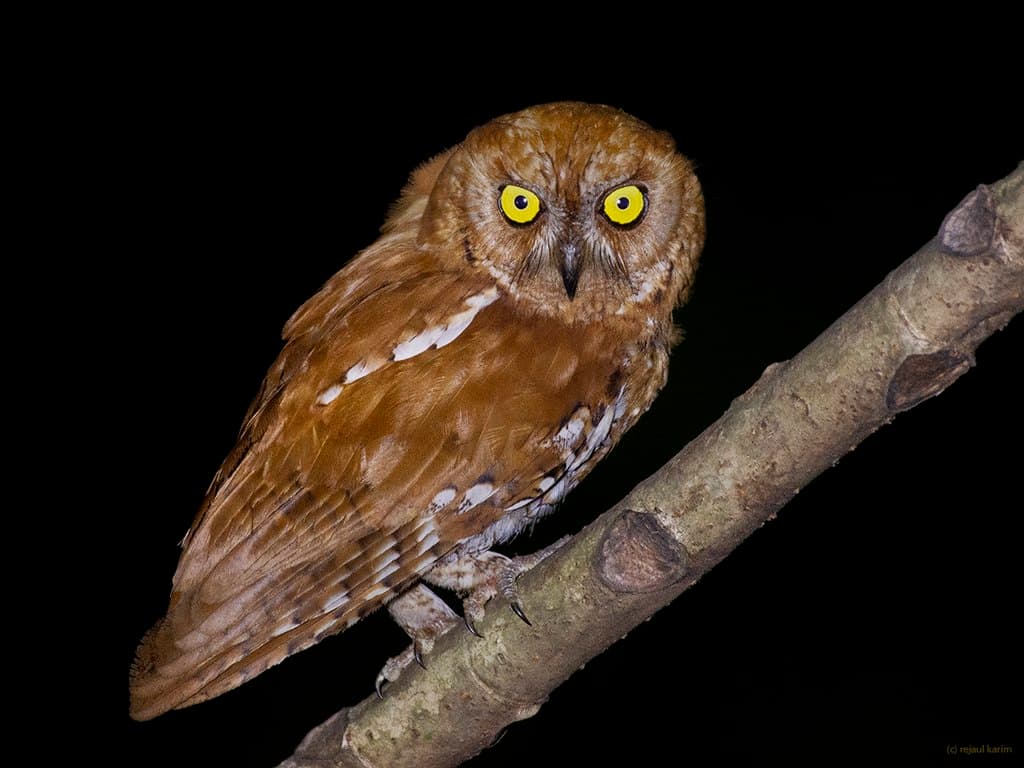
The oriental scops owls are small birds that grow up from 17 to 21 centimeters big. It has a pale rufous facial disc with a narrow dark rim, and it has a blackish-gray bill. The upperparts of the owls are plain rufous with dark streaking on the crown and forehead. As for the underparts, they are pale with buffish-white belly. An oriental scops owls have a whitish scapular stripe with well-marked underparts, yellow eyes, and ear tufts that are not always erect.
Oriental scops owls are native to Eastern and Southern Asia, living in dry deciduous forests where they nest in tree holes. Along with that, these owl species also live in open and semi-open woodlands, parks, and savannas with scattered trees. They are nocturnal birds that are active at dusk, spending the daytime roosting singly or sometimes in small groups. Where they live, they feed mainly on insects and spiders but also on amphibians, reptiles, small mammals, and small vertebrates.
Spot-Bellied Eagle Owl (ទីទុយធំព្រៃ)
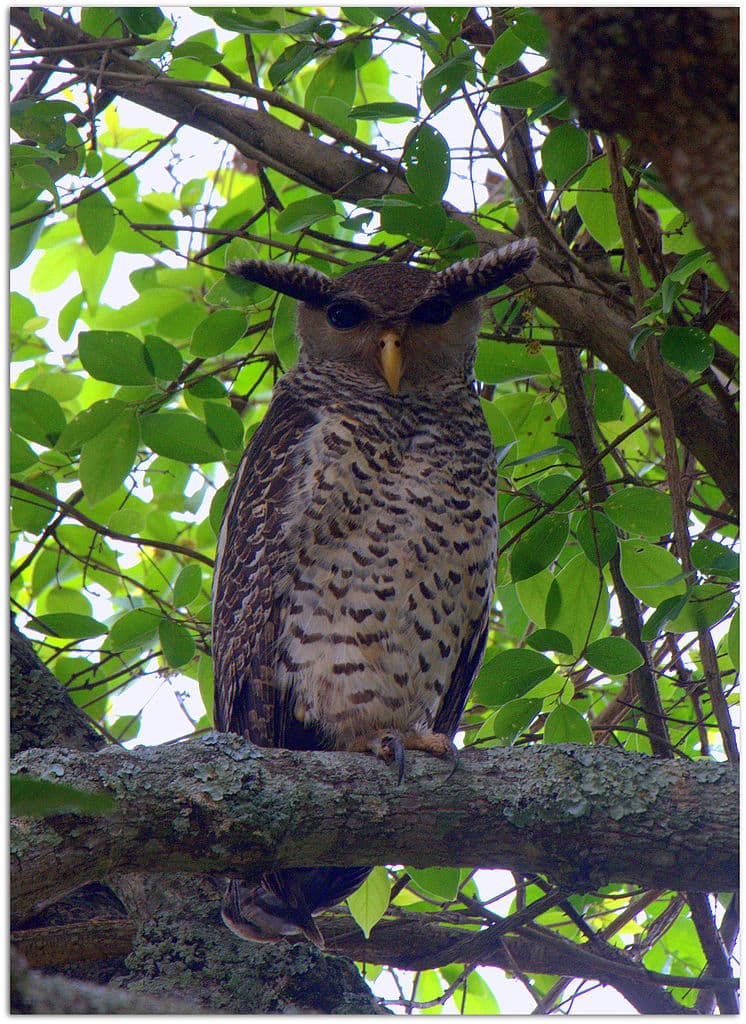
Spot-bellied owl is one of the large owl species that grows from 50 to 65 centimeters tall. The bird has an overall stark body that is grayish-brown with dark coarse brown back and upper wings. A spot-bellied owl has pale fulvous underparts with black and white horizontal stripes along the flanks. It has feathered legs and feet with large, heavy, and powerful talons. The most fascinating part of this owl is definitely its long ear tufts that can be 6.3 to 7.6 centimeters. Its cuteness does not end there, it also has heart-shaped spots all over its chest down to the legs.
These owls are native to the Indian Subcontinent and Southeast Asia where they dwell in primary and older secondary growth forests. At the same time, they also inhabit dense evergreen forests, moist deciduous forests, and a variety of land-based habitats. As nocturnal birds, they hide in dense foliage of large forest trees during the day and start hunting at dusk. Since they are very powerful, they feed on a wide variety of prey including small mammals and small rodents. Sometimes they also feed on fish giant squirrels, lizards, and snakes.
Things are quite the same with this owl species when it comes to the bad omen. People in Sri Lanka call them the Devil Bird due to their strange human-sounding call. As for Cambodia, old people believed that people in the direction that the bird calls at will die. That is because their call is deep and far, and more like a scream that rises and falls. In reality, it is normal for forest-dwelling birds and they don’t have any bad omens at all.
Spotted Wood Owl (មៀមធំវូ/អាសោម)
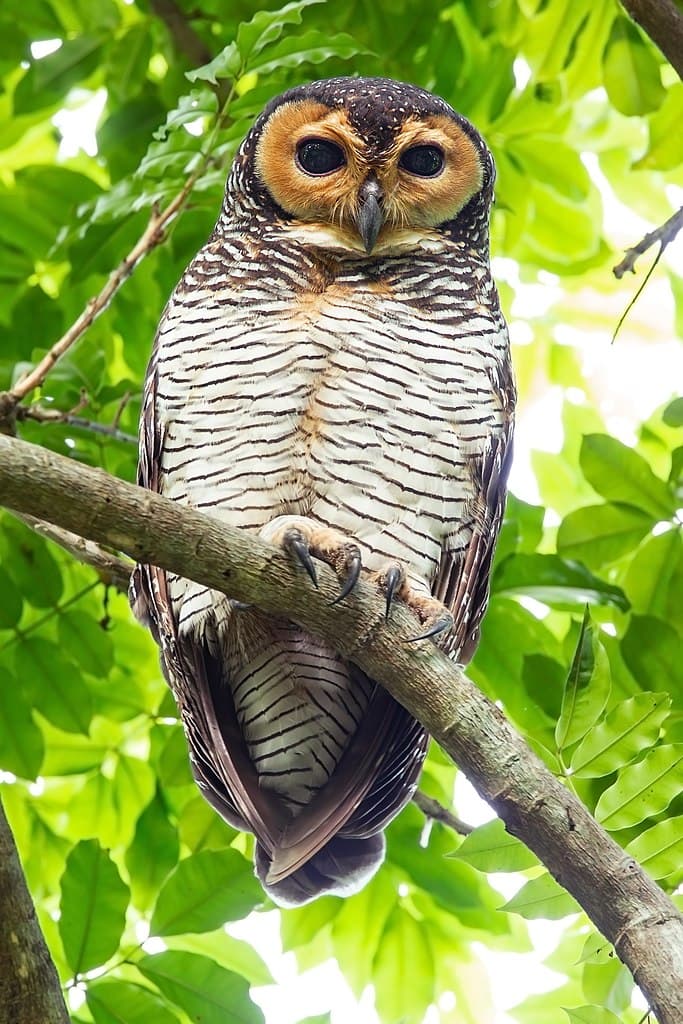
This is a fairly large owl species that grows to about 44 to 48 centimeters, and its appearance is rather unique. It has a chocolate brown head with an orangish-buff facial disc, and it does not have ear tufts. Its eyes are dark brown and its beak is greenish-black. A spotted wood owl has coffee upperparts with white bars and spots with black edges. The underparts are dull yellow with broad white and narrow black bars, and they have well-feathered legs and toes.
Spotted wood owls have 3 subspecies, and all of them are native to parts of Southeast Asia. They live in cleared woodlands, evergreen secondary forests, forest edges, lowland forests, mangrove swamps, parks in towns and villages, and plantations. In those areas, they feed on large insects, small birds, and small rodents. They spend their daytime roosting close to the tree trunks in dense foliage to avoid detection from other birds. When the evening comes, they start hunting before going back to roosting at dawn.
Related Post: 4 Fish Eagle Species In Cambodia
